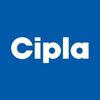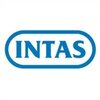Filter interviews by
Indoco Remedies Deputy Manager EHS Interview Questions and Answers
Indoco Remedies Deputy Manager EHS Interview Experiences
1 interview found
I applied via Recruitment Consulltant and was interviewed in Aug 2022. There were 2 interview rounds.

(2 Questions)
- Q1. 1. Which PHA methodology use for hazard analysis in process safety?. 2.Explain the operation of MEE and ETP plant?. 3.Types of safety trainings conducted?.
- Ans.
1. The PHA methodology commonly used for hazard analysis in process safety is the Hazard and Operability Study (HAZOP). 2. MEE (Mechanical Vapor Recompression Evaporator) and ETP (Effluent Treatment Plant) are used for wastewater treatment. 3. Types of safety trainings conducted include fire safety, first aid, and emergency response.
1. HAZOP is a systematic and structured approach to identify and analyze potential haza...
- Q2. 1.Explain HAZOP process?. 2.Safety Audit?.
- Ans.
HAZOP is a structured technique used to identify and evaluate potential hazards and operability problems in a process.
HAZOP stands for Hazard and Operability Study
It involves a team of experts analyzing the process step by step to identify potential hazards and operability issues
The team uses a set of guide words to prompt discussion and identify deviations from normal operating conditions
The identified hazards are the...
Interview Preparation Tips
Top trending discussions






Interview questions from similar companies

Deputy Manager EHS Interview Questions & Answers
Zydus Lifesciencesposted on 11 Jan 2024
I applied via Company Website and was interviewed before Jan 2023. There were 2 interview rounds.
(1 Question)
- Q1. Family Background
(1 Question)
- Q1. Why Zydus will select you??
Interview Preparation Tips

(2 Questions)
- Q1. About the power system and equipment maintenance
- Q2. Operational excellence initiatives.

Senior EHS Officer Interview Questions & Answers
Sun Pharmaceutical Industriesposted on 26 Nov 2024
(2 Questions)
- Q1. What is aerobic
- Q2. What is anaerobic
Interview Preparation Tips

I applied via Approached by Company and was interviewed in May 2024. There was 1 interview round.
(2 Questions)
- Q1. ETP ZLD MEE KNOWLEDGE
- Q2. HIRA, HAZOP, LEGAL COMPLIANCE,

I applied via Approached by Company and was interviewed in Dec 2023. There were 2 interview rounds.
(1 Question)
- Q1. 1. Introduction 2. Discussed Past Experience, & Family Background 3. Discussed in-depth each individual past projects, my roles in the projects and my achievements 4. Past Strategy on handling and trouble...
(1 Question)
- Q1. Salary negotiation
Interview Preparation Tips
- Chemical Engineering
- Troubleshootng
2. For managerial or lead roles, people always ask for your strength to lead, your attitude and your skill set.

Deputy Manager Interview Questions & Answers
Akums Drugs & Pharmaceuticals Limitedposted on 25 Dec 2024
I applied via Naukri.com and was interviewed in Jun 2024. There were 2 interview rounds.
(1 Question)
- Q1. Work role, profile understanding, CV assesment, and skill set
Psychometric test to check leadership abilities
Interview Preparation Tips

I applied via Referral and was interviewed in Oct 2023. There was 1 interview round.
(2 Questions)
- Q1. ERP Implementation strategies
- Ans.
ERP implementation strategies involve careful planning, stakeholder involvement, training, and monitoring.
Identify business needs and goals before selecting an ERP system.
Involve key stakeholders from different departments in the decision-making process.
Provide comprehensive training to employees to ensure successful adoption of the new system.
Monitor progress regularly and make adjustments as needed to ensure smooth i...
- Q2. Understand the business and the statutory requirements. Involve all the stakeholders.
Interview Preparation Tips

Deputy Manager Production Interview Questions & Answers
Aurobindo Pharmaposted on 29 Jul 2023
I applied via Walk-in and was interviewed in Jun 2023. There were 3 interview rounds.

(2 Questions)
- Q1. Technical round with cGMP basics
- Q2. Production planning and cost optimization.
(1 Question)
- Q1. Salary hike on current


(11 Questions)
- Q1. 1. What is the fullform of MLSS
- Ans.
MLSS stands for Mixed Liquor Suspended Solids.
MLSS refers to the concentration of suspended solids in a mixed liquor sample.
It is an important parameter in wastewater treatment processes.
MLSS is measured in milligrams per liter (mg/L) or parts per million (ppm).
It indicates the biological activity and treatment efficiency of the system.
Maintaining optimal MLSS levels is crucial for effective wastewater treatment.
- Q2. 2. What types of biohazards you have andhow to dispose?
- Q3. 3. Flow diagram of ETP
- Ans.
A flow diagram of an ETP shows the process of treating wastewater before it is discharged into the environment.
The flow diagram typically includes the different stages of treatment, such as screening, sedimentation, and disinfection.
It may also show the equipment used in each stage, such as pumps, filters, and chemical dosing systems.
The diagram should indicate the flow of water through the system, including any recirc...
- Q4. 4. What measure actions taken to minimize the hazarfous waste
- Ans.
To minimize hazardous waste, we implement measures such as waste reduction, recycling, and proper disposal.
We conduct waste audits to identify areas where waste can be reduced.
We implement a waste reduction program that includes reducing the use of hazardous materials.
We recycle materials such as paper, plastic, and metal.
We properly dispose of hazardous waste by following regulations and using licensed disposal facili...
- Q5. 5. How to dispose of powder wastes?
- Ans.
Powder wastes should be disposed of properly to avoid environmental hazards.
Segregate the powder waste according to its type and toxicity level.
Dispose of non-hazardous powder waste in regular trash bins.
Hazardous powder waste should be collected in sealed containers and labeled properly.
Contact a licensed waste disposal company to properly dispose of hazardous powder waste.
Follow local and federal regulations for powd...
- Q6. 6. Explain the types of fire and fire extinguishers?
- Ans.
There are four types of fire: Class A, Class B, Class C, and Class D. Each type requires a specific type of fire extinguisher.
Class A fires involve ordinary combustibles such as wood, paper, or cloth. Water or foam extinguishers are suitable for this type of fire.
Class B fires involve flammable liquids such as gasoline or oil. Carbon dioxide or dry chemical extinguishers are suitable for this type of fire.
Class C fires...
- Q7. 7. What isthe function of Jockey pump
- Ans.
Jockey pump is a small pump used to maintain pressure in a fire protection system.
Jockey pump is used in fire protection systems to maintain pressure in the system.
It is a small pump that operates continuously to keep the pressure within a certain range.
It is typically used in conjunction with larger fire pumps that are activated when the pressure drops below a certain level.
Jockey pumps are important for ensuring that...
- Q8. 8. How to calculate the fire water capacity?
- Ans.
Fire water capacity can be calculated based on the fire hazard classification and the size of the facility.
Determine the fire hazard classification of the facility
Calculate the required fire flow rate based on the classification
Determine the duration of the fire event
Multiply the fire flow rate by the duration to get the fire water capacity
Consider any additional factors such as fire department response time and water
- Q9. 9. How to calculate the fire load
- Ans.
Fire load can be calculated by determining the amount of combustible materials in a given area.
Identify all combustible materials in the area
Determine the weight or volume of each material
Calculate the heat release rate of each material
Add up the heat release rates to get the total fire load
Consider the ventilation and layout of the area in the calculation
- Q10. 10. Explain types of work permits which you have followed
- Q11. 11. How to generate condensate water in boiler
- Ans.
Condensate water is generated in a boiler when steam is condensed back into water.
Condensate water is a byproduct of the steam generation process in a boiler
It is generated when steam is cooled and condensed back into water
This water is typically high in purity and can be reused in the boiler or for other purposes
Methods for generating condensate water include using heat exchangers or cooling towers
Interview Preparation Tips
Indoco Remedies Interview FAQs
Tell us how to improve this page.
Indoco Remedies Interviews By Designations
- Indoco Remedies Senior Officer Interview Questions
- Indoco Remedies Medical Representative Interview Questions
- Indoco Remedies Area Sales Manager Interview Questions
- Indoco Remedies Production Officer Interview Questions
- Indoco Remedies Quality Assurance Officer Interview Questions
- Indoco Remedies Divisional Sales Manager Interview Questions
- Indoco Remedies Area Business Manager Interview Questions
- Indoco Remedies Executive Production Interview Questions
- Show more
Interview Questions for Popular Designations
- EHS Officer Interview Questions
- Assistant Manager - EHS Interview Questions
- Senior EHS Officer Interview Questions
- Electrical Engineer Interview Questions
- QA QC Engineer Interview Questions
- Senior Executive - EHS Interview Questions
- Deputy Manager-Electrical Interview Questions
- Deputy Manager Interview Questions
- Show more
Indoco Remedies Deputy Manager EHS Interview Process
based on 1 interview
Interview experience
Interview Questions from Similar Companies
|
Officer
432
salaries
| ₹1.9 L/yr - ₹5.5 L/yr |
|
Senior Officer
409
salaries
| ₹3 L/yr - ₹7.1 L/yr |
|
Junior Officer
287
salaries
| ₹1.8 L/yr - ₹3.9 L/yr |
|
Production Officer
167
salaries
| ₹1.6 L/yr - ₹5.5 L/yr |
|
Executive
157
salaries
| ₹3.8 L/yr - ₹9.6 L/yr |

Sun Pharmaceutical Industries

Cipla

DRJ & CO

Lupin
- Home >
- Interviews >
- Indoco Remedies Interview Questions >
- Indoco Remedies Deputy Manager EHS Interview Questions









